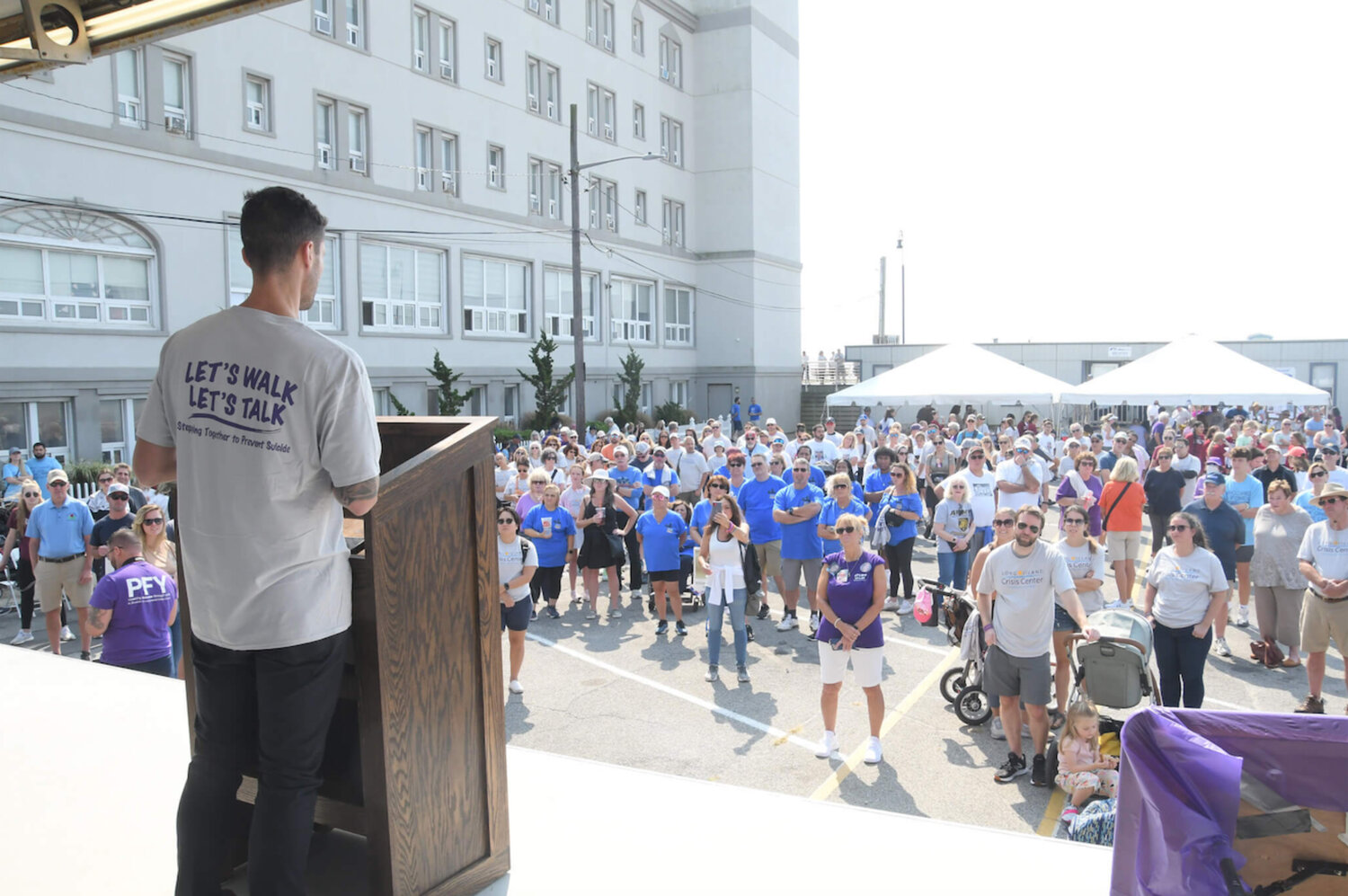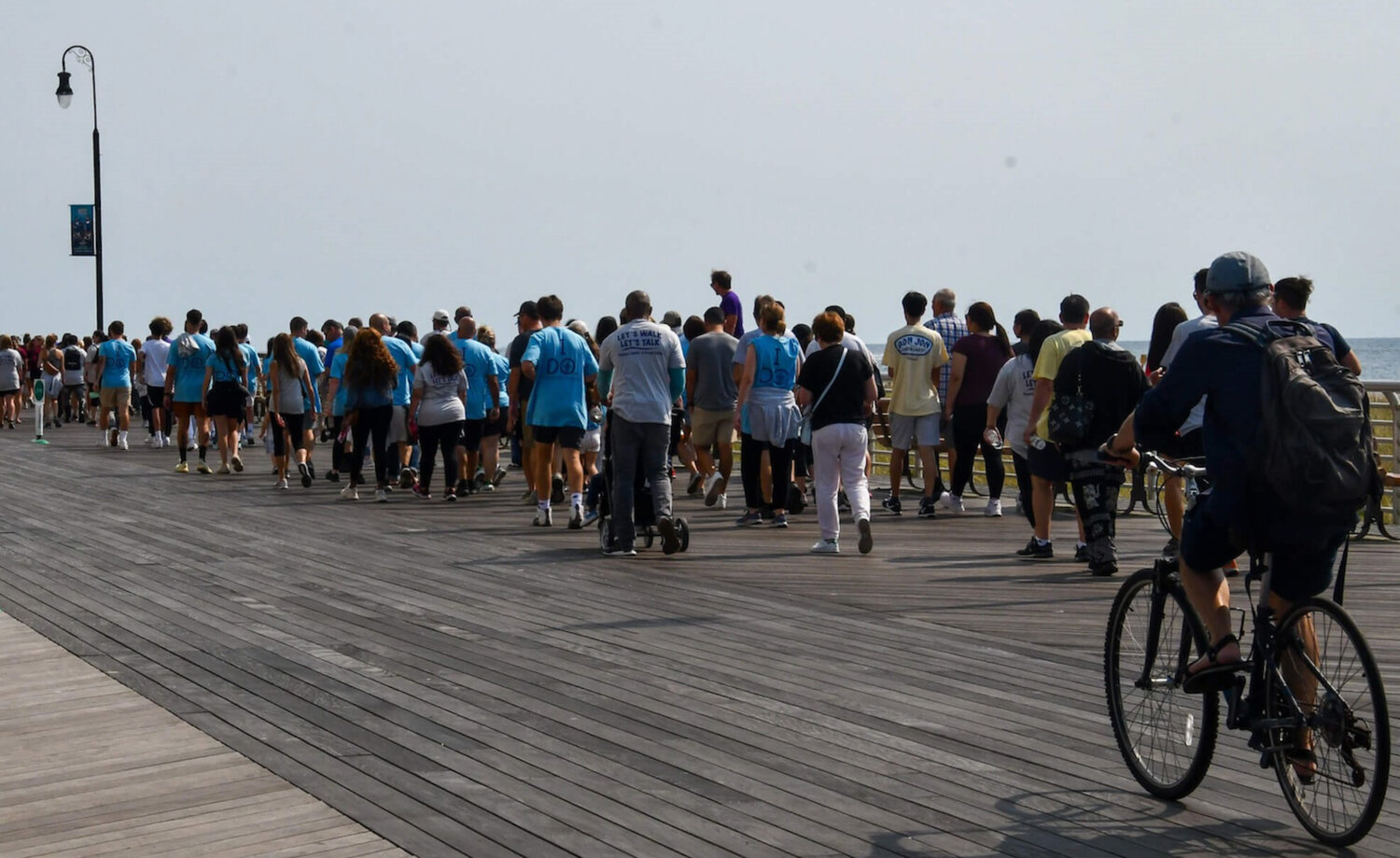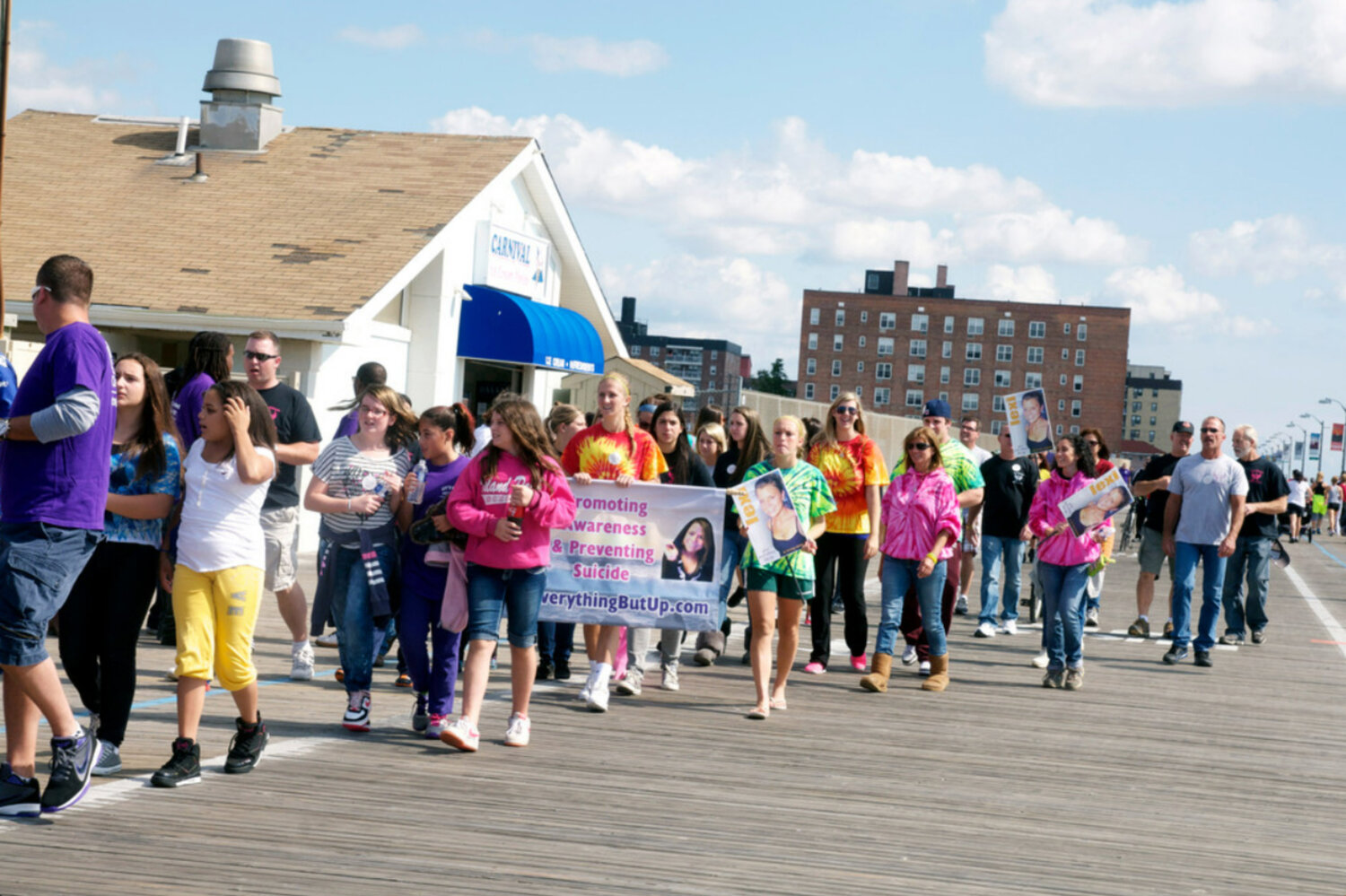Long Island Crisis Center to host 15th annual suicide prevention walk
The Long Island Crisis Center is hosting its 15th annual suicide prevention walk on the Long Beach Boardwalk on Sunday, Oct. 1.
The event, dubbed “Let’s Walk, Let’s Talk ... Stepping Together to Prevent Suicide,” unites those impacted by suicide, and raises funds so the crisis center can continue doing what it does best: remain a 24/7 center, that is there to help Long Islanders in times of need.
About 15 years ago, a father of a teenager who had committed suicide reached out to the crisis center, according to Theresa Buhse, its executive director since 2019. He was holding a walk in a park in Merrick, in honor of his daughter, and the crisis center became involved.
“He reached out to us, and we were there,” Buhse said. “And I think that was the beginning. We were like, you know, this is something that is needed. You need a place for people to come together to know that they’re there to talk about suicide, but that everybody there is accepting and has either been touched by it or is comfortable talking about it.”
Festivities will kick off at 10:30 a.m. on the boardwalk, at 1 Laurelton Blvd. Those who attend can expect music, along with informational tables and booths from various organizations. The morning program will honor the crisis center’s person of the year. The walk itself will begin at 11:30 a.m.
The crisis center, which opened its doors in 1971 and has headquarters in Bellmore, offers a multitude of services to the Long Island community. It partners with municipalities and organizations throughout the region to be the go-to agency for support in times of crisis. In addition, the center operates several hotlines, including its generic crisis number, (516) 679-1111.
The agency is also the 988 center for the Long Island region, replacing the national suicide prevention number last year, to make it easier to remember.
The agency goes out into the community, working with schools and other organizations to help people learn about managing their mental health, Tawni Engel, the associate executive director, explained.
“We’re working with students, all the way down into the elementary schools and even younger, actually,” she said. “We have workshops that we do that are really geared for kids — like managing your emotions — things to really kind of meet them where they’re at.”
The crisis center also helps members of the LGBTQ community, through its subsidiary agency, PFY, which formerly stood for Pride For Youth. PFY, founded in 1993, is now known simply by its acronym.
“The LGBTQ population,” Engel said, “unfortunately has much higher rates of suicide as well as suicidal ideation. It’s kind of one of the reasons why we started PFY 30 years ago. People were calling the hotlines and looking for services.”
Volunteers, who undergo extensive training, answer the crisis center’s hotlines, according to Engel, who began working with the crisis center as a volunteer 15 years ago.
“I’ll be honest, it’s intense,” she said of the training. “You learn a lot about communication, just in your own personal life. It’s very interesting.”
“It’s really involved training,” Susan Slagg, the crisis center’s operations manager, said. “We tell people it is almost like taking a college course.”
Once new volunteers complete their training, which takes about six months, they shadow calls alongside people who are currently serving in that role. After that, volunteers start answering the phones on their own, while being shadowed by a mentor who listens in. Once that phase is completed, they’re ready to take solo calls.
Slagg, who started out as a volunteer with the crisis center in 2018, said answering hotline calls is rewarding work.
“It’s challenging in that, you know, even though we’re all well trained, you don’t really know what’s on the other side of the phone,” she said. “It may just be somebody that just needs to talk — needs a little support. It may be somebody that did something to harm themselves already. That’s the piece that’s stressful, but once you get the call, the training kicks in and we try to validate, we try to support and de-escalate the situation, if that’s needed.”
Training courses for new volunteers usually occur twice a year, and people can learn more about volunteering at the walk.
Individual registration for the walk costs $25. Families and friends can form teams, which also raise money for the crisis center. This year, the agency is hoping to raise $50,000.
“As much as it is a somber topic that we’re all coming together to address,” Engel said of the walk, “it’s also really kind of an uplifting day because we see all these families come together that have had this same, very unfortunate experience, but yet, they can help each other with each other’s stories.”
“I know it sounds funny, but we always say, ‘It’s always a great day — it’s always beautiful,’” Buhse said. “A good majority of the people there have been touched by suicide personally. It’s a tough subject. Suicide, you know, it’s still taboo and not everybody is open to talking about it. I think what’s really special about this event is pretty much everyone there is somewhat on the same page, in that this is something that needs to be discussed, in order to be prevented.”
To learn more about the crisis center, the walk, and how to get involved, visit LongIslandCrisisCenter.org/TheWalk.











